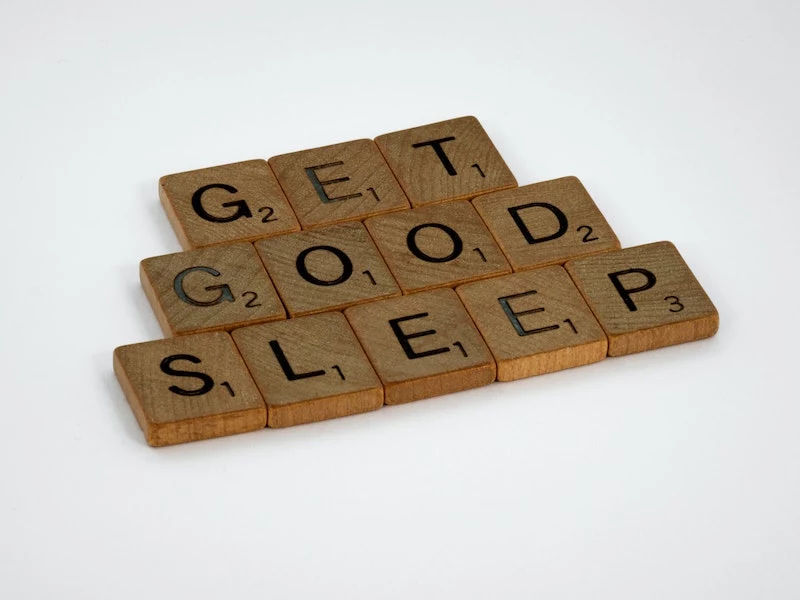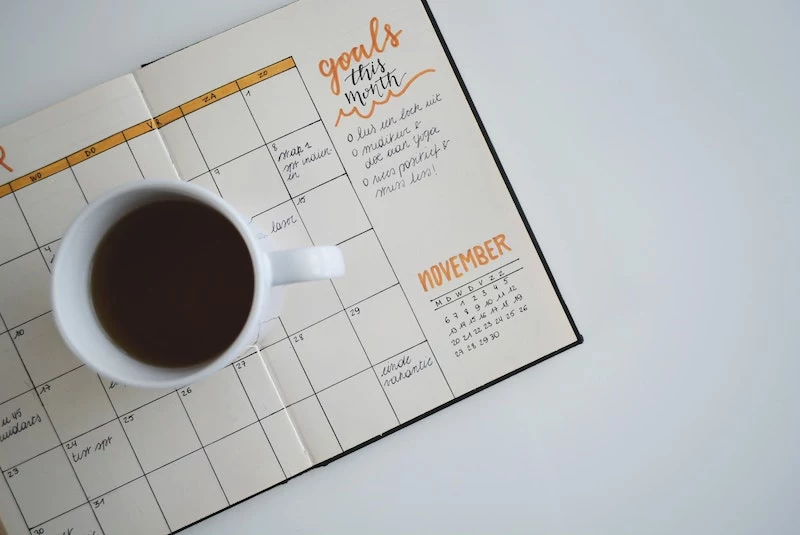Your Morning Routine Is Broken. Here’s How a Performance Coach Would Fix It.
For years, I’ve helped everyone from top-tier executives to driven artists figure out one thing: how to win the day. And almost every single time, our work starts by dissecting the very first hour after they wake up. Your morning isn’t just a prologue; it sets the entire tone for your energy, focus, and mood. A chaotic start almost always leads to a reactive, stressful day.
In this article
- Feeling Overwhelmed? Just Start Here.
- The ‘Why’ Behind Waking Up: Your Body’s Master Clock
- Pillar 1: Consistency Is Your Superpower
- Pillar 2: Let There Be Light (Seriously)
- Pillar 3: Hydrate and Move Your Body
- The Phone Problem: How to Reclaim Your First Hour
- Pillar 4: Fuel, Don’t Flog, Your System
- Pillar 5: Set Your Intention
- So, You Messed Up. Now What?
- A Quick Note on Safety
- Inspirational Gallery
So many people try to muscle their way through a better morning. They force themselves out of bed, chug coffee, and rush through a routine they secretly hate. To be frank, that approach is built on willpower, and willpower is a battery that runs out. A truly effective morning isn’t about force. It’s about working with your body’s natural wiring by creating a sequence of small, intentional habits that build momentum.
This isn’t just another list of life hacks. It’s a framework built on practical physiology and real-world experience. We’re going to look at why certain things work and how you can tailor them to your actual life—because let’s be real, the ideal routine for a pro athlete is going to look a little different than one for a new parent.

Feeling Overwhelmed? Just Start Here.
Before we dive deep, let’s make one thing clear: you don’t have to do all of this at once. That’s a recipe for failure. If you’re looking for the one thing to start with, this is it:
Pick one wake-up time and stick to it. Seven days a week.
That’s it. Don’t worry about anything else for the first week. By anchoring this one habit, you’re giving your body the single most important signal it needs. Everything else we talk about builds on this foundation.
The ‘Why’ Behind Waking Up: Your Body’s Master Clock
Okay, so let’s quickly get into the science, because understanding this makes the habits stick. Your body operates on a 24-hour cycle, often called the circadian rhythm. Think of it as a master clock in your brain that controls when you feel sleepy and when you feel alert.
The most powerful lever we have to control this clock is light. When light hits your eyes in the morning, it sends a powerful signal to your brain to shut down melatonin (the sleepy hormone) and start a healthy release of cortisol. Cortisol gets a bad rap, but that morning spike is exactly what you want—it’s the body’s natural “wake up and go” signal. When we wake up in a dark room and immediately blast our eyes with a phone screen, our internal clock gets confused. The goal of a good morning routine is to send clear, consistent signals that the day has officially begun.

Pillar 1: Consistency Is Your Superpower
As I mentioned, a consistent wake-up time is the bedrock of everything. When your body can anticipate waking up, it starts the wake-up process before your alarm even goes off. This is the secret to waking up feeling less groggy.
I know what you’re thinking: what about weekends? Honestly, sleeping in for hours is like giving yourself “social jetlag.” It’s why so many people feel awful on Monday mornings. If you absolutely must sleep in, try to keep it to an hour or less. A little extra rest won’t completely derail your rhythm, but any more than that and you’re basically flying to a new time zone for two days.
Common Roadblock: “I keep hitting the snooze button.”
Coach’s Fix: Put your alarm clock on the other side of the room. I mean it. The physical act of getting out of bed to turn it off is half the battle. You can grab a simple digital alarm clock for about $15 to $25 at Target or online.

Pillar 2: Let There Be Light (Seriously)
Once you’re up, your very first mission is to get bright light in your eyes. This is the most powerful, non-caffeinated tool you have for shaking off sleep inertia. Aim for 10 to 20 minutes of light within the first half-hour of your day.
The best way is to just step outside. You don’t need to stare at the sun—just have your coffee on the porch or take a quick walk around the block. Even on a gray, overcast day, the outdoor light is exponentially more powerful than your indoor lights.
But what if you live somewhere with dark winters or you wake up before the sun? This is where technology is your friend. I often recommend a light therapy lamp, sometimes called a SAD lamp. Look for reputable brands like Verilux or Carex, and make sure the lamp is certified to provide 10,000 lux and is UV-free. A good one will set you back between $40 and $150, but it’s a game-changer. You just place it off to the side while you’re eating or reading for about 20 minutes. (Heads up: if you have any eye conditions, it’s always a good idea to chat with your doctor first.)

Pillar 3: Hydrate and Move Your Body
You lose a surprising amount of water overnight just by breathing. You’re waking up dehydrated, which can lead to fatigue and brain fog. So, before you even think about coffee, drink a big glass of water—around 16-20 ounces.
Quick tip: Leave a water bottle on your nightstand so it’s the first thing you see. For a little boost, add a tiny pinch (about 1/8th of a teaspoon) of high-quality sea salt or pink Himalayan salt and a squeeze of lemon. The salt contains electrolytes that help your body actually absorb the water more efficiently.
After hydrating, a few minutes of gentle movement is perfect for waking up your body. We’re not talking about a grueling workout here. The goal is just to increase blood flow and warm up your muscles. A five-minute walk, some simple yoga poses like Cat-Cow, or even just 15-20 bodyweight squats will do the trick.

The Phone Problem: How to Reclaim Your First Hour
This is the big one. Reaching for your phone first thing in the morning is probably the most destructive habit for your focus. You’re immediately flooding your brain with other people’s emergencies, stressful news, and social media drama. It puts you in a reactive, defensive state from the moment you open your eyes.
My non-negotiable rule for clients is this: no phone for the first 60 minutes of the day.
The most common question I get is, “But what would I even DO for an hour?!” It feels like a void, I get it. But it’s not. Here’s what that hour can look like:
- Minutes 0-10: Wake up, turn off the alarm, and head straight for a window or outside for your light exposure while drinking your glass of water.
- Minutes 10-20: Do some gentle movement. Stretch, walk, or do a few simple yoga poses.
- Minutes 20-45: Make and eat a protein-focused breakfast (more on that next).
- Minutes 45-55: Take five minutes to journal or plan your day. What are your top 1-3 priorities?
- Minutes 55-60: Make your bed. It’s a small win that starts your day with a sense of order.
See? The hour fills itself with productive, calming actions that are all about you, not your inbox.

Pillar 4: Fuel, Don’t Flog, Your System
The breakfast debate is endless, but the principle is simple: be intentional. A sugary cereal or pastry will spike your blood sugar, leading to a nasty energy crash a couple of hours later. Instead, build your breakfast around protein and healthy fats for sustained energy.
A go-to smoothie recipe I give my clients is super easy. Just blend this up:
- 1 cup of unsweetened almond milk
- 1 scoop (around 30g) of quality vanilla or chocolate protein powder
- A big handful of spinach (I promise, you won’t taste it)
- 1/4 of an avocado or a tablespoon of almond butter for healthy fat
- A half-cup of frozen berries
Other great options include eggs with veggies or full-fat Greek yogurt with nuts and berries. A good tub of protein powder usually costs between $30 and $50 and will last you a while.
Pillar 5: Set Your Intention
With your body awake and fueled, the final step is to align your mind. Making your bed is the first part of this. The second is a simple 5-minute journaling practice. You don’t need a fancy journal—a simple notebook for $5-$20 works just fine. Just jot down:

- Three things you’re grateful for.
- What would make today great? (This helps define your top priorities).
- A daily affirmation, like “I am focused and in control.”
This isn’t woo-woo stuff; it’s a training exercise for your brain to focus on the positive and what you can control.
So, You Messed Up. Now What?
Let’s be realistic: you’re going to have days where you oversleep or grab your phone by accident. It happens. The goal isn’t perfection; it’s consistency. Don’t let one slip-up derail your entire week.
If you mess up, just get back on track with the very next action. Slept in? Skip the snooze and get some light. Checked your phone? Put it down now and go drink your water. The key is to not say, “Well, I guess today is a wash.” Just reset and move on. Remember what to expect: Week 1 will probably feel hard. By Week 2, waking up will get a bit easier. By Week 4, you’ll start to feel a real sense of control you won’t want to give up.

A Quick Note on Safety
While this framework is powerful, it’s not a substitute for medical advice. If you have persistent fatigue, chronic insomnia, or feelings of depression, please see a doctor. These could be signs of underlying issues like thyroid problems, anemia, or sleep apnea that a morning routine can’t fix on its own. Always build your new habits on a solid foundation of health.
Inspirational Gallery


The first 10 minutes of your day are sacred. So why hand them over to your phone?
Reaching for your phone immediately trains your brain to start the day in a reactive state, chasing dopamine hits from notifications and news feeds. This derails your focus before you’ve even had a chance to set your own intentions. Instead, invest in an old-school solution: a dedicated alarm clock. A sunrise alarm like those from Philips or Lumie can wake you with gentle light, mimicking the natural signals the article mentions. Pair it with a physical journal, like a simple Moleskine or the guided Five Minute Journal, to capture your own thoughts, not someone else’s agenda.

A study from the World Health Organization notes that noise from alarms can increase blood pressure and the release of stress hormones.
The sound you wake up to matters. A jarring, high-frequency beep is interpreted by your brain as an alert or danger signal. Swapping it for a gentle, progressive soundscape—think birdsong, soft chimes, or ambient music from an app like Calm—can significantly reduce that initial stress response, setting a more peaceful tone for the entire day.
The Coffee First Mistake: Drinking coffee on an empty stomach can interfere with your body’s cortisol rhythm and sometimes lead to jitters or a crash later on.
The Hydration First Fix: Before coffee, drink a large glass of water. Your body is dehydrated after sleep. Water fires up your metabolism and aids mental clarity. For an upgrade, add a squeeze of lemon and a pinch of high-quality sea salt to help replenish electrolytes lost overnight. Keep a dedicated bottle, like a Hydro Flask, on your nightstand as a visual cue.










